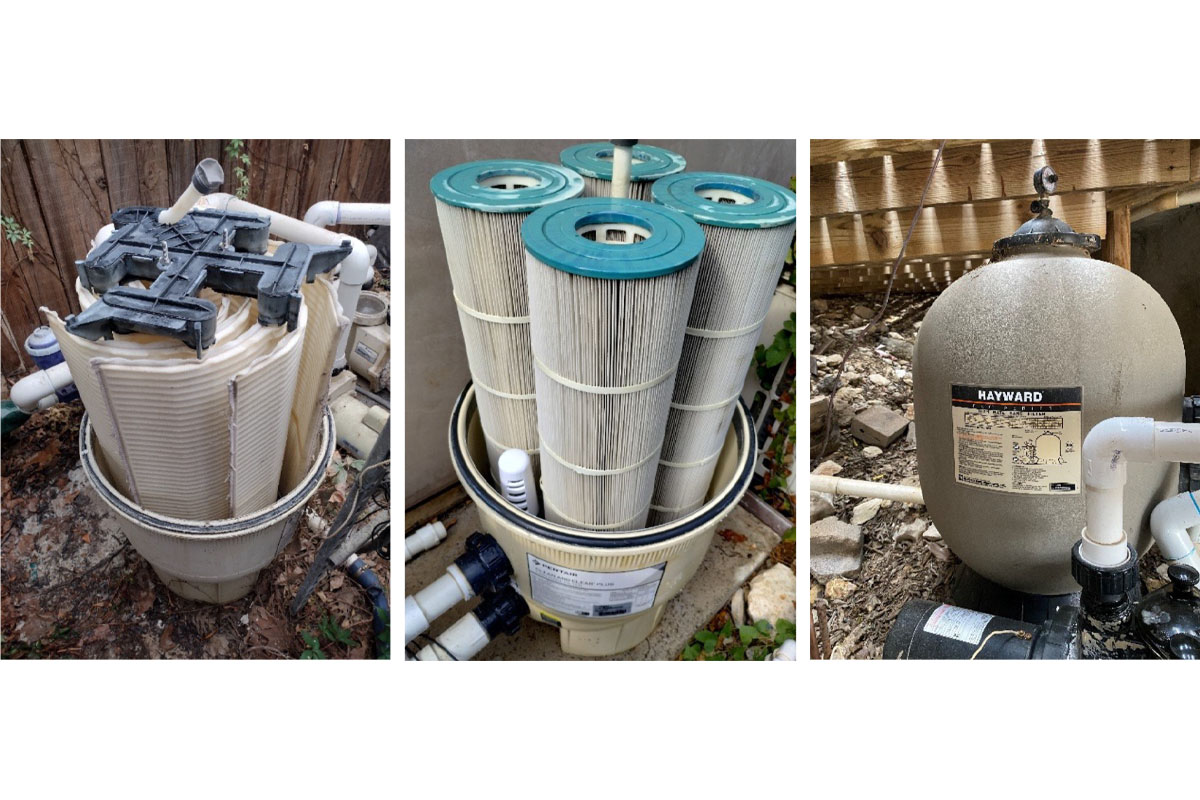When it comes to swimming pool maintenance, keeping your pool water clean and clear is essential. The key to this is an effective pool filter, which works to remove dirt, debris, and tiny particles from your water. But with so many options available, how do you know which filter is right for your pool? Let’s break down the three most common types of swimming pool filters: Diatomaceous Earth (D.E.), Cartridge, and Sand filters.
Diatomaceous Earth (D.E.) Filters: The Gold Standard for Pool Water Clarity
If you’re serious about achieving the clearest water possible, D.E. filters are your best option. These filters trap particles as small as 4 microns—compare that to the size of a human hair at 70 microns! In places like Austin, TX, where pollen and dust are a constant challenge, a D.E. filter does an incredible job keeping your swimming pool spotless. However, this high performance comes with more maintenance. D.E. filters need to be backwashed and recharged every 4 to 6 weeks, and a full D.E. filter service is required annually. But the result? A sparkling, crystal-clear pool that’s always swim-ready
Cartridge Filters: A Perfect Fit for Saltwater Pools
Cartridge filters are another excellent choice, particularly if you have a saltwater pool. These filters can capture particles down to 15 microns, and because they don’t require backwashing, they help maintain the ideal salt balance in your pool. While cartridge filters don’t need frequent backwashing like D.E. filters, they do require regular cleaning. You’ll need to clean the cartridges every quarter or when the pressure rises by 10 psi. Cartridges should also be replaced every couple of years for optimal performance.
Sand Filters: Low Maintenance, but Less Effective
For those who prioritize convenience, sand filters offer ease of use and low maintenance. Sand filters are self-cleaning during backwashing, so you don’t have to worry about manually cleaning the filter. However, their ability to filter particles is more limited—only capturing those between 25 and 50 microns, which may not be enough in areas with fine dust or pollen. The sand in these filters should be replaced every 3 to 5 years to maintain its effectiveness, and occasional use of clarifiers may be necessary to help with water clarity.
Which Pool Filter is Right for You?
Choosing the right pool filter depends on your priorities and the specific needs of your swimming pool.
For the cleanest water and ultimate filtration:
A D.E. filter is your top choice. It provides the finest filtration, catching even the smallest particles. While it requires more frequent maintenance, the reward is unmatched water clarity—perfect if your pool is in an area with high pollen, dust, or frequent use.
For saltwater pools or easier upkeep:
A cartridge filter offers a great balance between performance and maintenance. It’s ideal for saltwater pools, as it avoids backwashing and helps maintain proper salt levels. Plus, it requires less frequent cleanings compared to a D.E. filter, making it a solid choice for pool owners who prefer a more hands-off approach.
For simplicity and low maintenance:
A sand filter is the way to go. While it doesn’t filter as finely as the other options, it’s easy to use and requires minimal upkeep. It’s a great choice if you’re looking for a budget-friendly option that still keeps your water clean, although you may need to use clarifiers or other aids to help with water clarity.
When selecting a pool filter, quality matters. Stick with reliable brands like Jandy, Pentair, or Hayward to ensure long-lasting, effective filtration.


